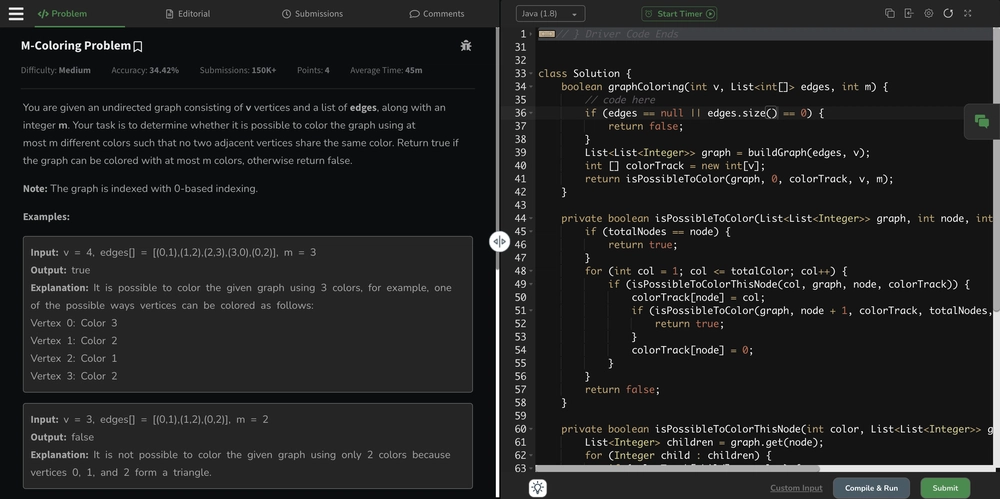Handling Large Data in Node.js: Performance Tips & Best Practices
Handling large data efficiently in Node.js is crucial for ensuring smooth application performance and preventing memory leaks. In this blog, we'll explore the best practices for managing large datasets in Node.js with practical examples. 1. Use Streams for Large Data Processing Why Use Streams? Streams allow you to process large files piece by piece instead of loading them entirely into memory, reducing RAM usage. Example: Reading a Large File with Streams const fs = require('fs'); const readStream = fs.createReadStream('large-file.txt', 'utf8'); readStream.on('data', (chunk) => { console.log('Received chunk:', chunk.length); }); readStream.on('end', () => { console.log('File read complete.'); }); This approach is much more efficient than using fs.readFile(), which loads the entire file into memory. 2. Pagination for Large Data Sets Why Use Pagination? Fetching large datasets from a database can slow down performance. Pagination limits the number of records retrieved per request. Example: Pagination in MySQL with Sequelize const { Op } = require('sequelize'); const getUsers = async (page = 1, limit = 10) => { const offset = (page - 1) * limit; return await User.findAll({ limit, offset, order: [['createdAt', 'DESC']] }); }; Instead of fetching thousands of records at once, this retrieves data in smaller chunks. 3. Efficient Querying with Indexing Why Use Indexing? Indexes improve the speed of database queries, especially for searching and filtering operations. Example: Creating an Index in MongoDB const db = require('mongodb').MongoClient; db.connect('mongodb://localhost:27017/mydb', async (err, client) => { const collection = client.db().collection('users'); await collection.createIndex({ email: 1 }); // Creates an index on the 'email' field console.log('Index created'); }); An index on the email field speeds up queries like db.users.find({ email: 'test@example.com' }) significantly. 4. Use Caching to Reduce Database Load Why Use Caching? Caching helps store frequently accessed data in memory, reducing database calls and improving response times. Example: Using Redis for Caching const redis = require('redis'); const client = redis.createClient(); const getUser = async (userId) => { const cachedUser = await client.get(`user:${userId}`); if (cachedUser) return JSON.parse(cachedUser); const user = await User.findByPk(userId); await client.setex(`user:${userId}`, 3600, JSON.stringify(user)); return user; }; This stores the user data in Redis for quick retrieval, reducing repetitive database queries. 5. Optimize JSON Processing for Large Data Why Optimize JSON Handling? Parsing large JSON objects can be slow and memory-intensive. Example: Using **JSONStream**** for Large JSON Files** const fs = require('fs'); const JSONStream = require('JSONStream'); fs.createReadStream('large-data.json') .pipe(JSONStream.parse('*')) .on('data', (obj) => { console.log('Processed:', obj); }) .on('end', () => { console.log('JSON parsing complete.'); }); This processes JSON objects as they arrive instead of loading the entire file into memory. 6. Use Worker Threads for Heavy Computation Why Use Worker Threads? Node.js runs on a single thread, meaning CPU-intensive tasks can block the event loop. Worker threads allow parallel execution of tasks. Example: Running Heavy Computations in a Worker Thread const { Worker } = require('worker_threads'); const worker = new Worker('./worker.js'); worker.on('message', (message) => console.log('Worker result:', message)); worker.postMessage(1000000); In worker.js: const { parentPort } = require('worker_threads'); parentPort.on('message', (num) => { let result = 0; for (let i = 0; i

Handling large data efficiently in Node.js is crucial for ensuring smooth application performance and preventing memory leaks. In this blog, we'll explore the best practices for managing large datasets in Node.js with practical examples.
1. Use Streams for Large Data Processing
Why Use Streams?
Streams allow you to process large files piece by piece instead of loading them entirely into memory, reducing RAM usage.
Example: Reading a Large File with Streams
const fs = require('fs');
const readStream = fs.createReadStream('large-file.txt', 'utf8');
readStream.on('data', (chunk) => {
console.log('Received chunk:', chunk.length);
});
readStream.on('end', () => {
console.log('File read complete.');
});
This approach is much more efficient than using fs.readFile(), which loads the entire file into memory.
2. Pagination for Large Data Sets
Why Use Pagination?
Fetching large datasets from a database can slow down performance. Pagination limits the number of records retrieved per request.
Example: Pagination in MySQL with Sequelize
const { Op } = require('sequelize');
const getUsers = async (page = 1, limit = 10) => {
const offset = (page - 1) * limit;
return await User.findAll({ limit, offset, order: [['createdAt', 'DESC']] });
};
Instead of fetching thousands of records at once, this retrieves data in smaller chunks.
3. Efficient Querying with Indexing
Why Use Indexing?
Indexes improve the speed of database queries, especially for searching and filtering operations.
Example: Creating an Index in MongoDB
const db = require('mongodb').MongoClient;
db.connect('mongodb://localhost:27017/mydb', async (err, client) => {
const collection = client.db().collection('users');
await collection.createIndex({ email: 1 }); // Creates an index on the 'email' field
console.log('Index created');
});
An index on the email field speeds up queries like db.users.find({ email: 'test@example.com' }) significantly.
4. Use Caching to Reduce Database Load
Why Use Caching?
Caching helps store frequently accessed data in memory, reducing database calls and improving response times.
Example: Using Redis for Caching
const redis = require('redis');
const client = redis.createClient();
const getUser = async (userId) => {
const cachedUser = await client.get(`user:${userId}`);
if (cachedUser) return JSON.parse(cachedUser);
const user = await User.findByPk(userId);
await client.setex(`user:${userId}`, 3600, JSON.stringify(user));
return user;
};
This stores the user data in Redis for quick retrieval, reducing repetitive database queries.
5. Optimize JSON Processing for Large Data
Why Optimize JSON Handling?
Parsing large JSON objects can be slow and memory-intensive.
Example: Using **JSONStream**** for Large JSON Files**
const fs = require('fs');
const JSONStream = require('JSONStream');
fs.createReadStream('large-data.json')
.pipe(JSONStream.parse('*'))
.on('data', (obj) => {
console.log('Processed:', obj);
})
.on('end', () => {
console.log('JSON parsing complete.');
});
This processes JSON objects as they arrive instead of loading the entire file into memory.
6. Use Worker Threads for Heavy Computation
Why Use Worker Threads?
Node.js runs on a single thread, meaning CPU-intensive tasks can block the event loop. Worker threads allow parallel execution of tasks.
Example: Running Heavy Computations in a Worker Thread
const { Worker } = require('worker_threads');
const worker = new Worker('./worker.js');
worker.on('message', (message) => console.log('Worker result:', message));
worker.postMessage(1000000);
In worker.js:
const { parentPort } = require('worker_threads');
parentPort.on('message', (num) => {
let result = 0;
for (let i = 0; i < num; i++) result += i;
parentPort.postMessage(result);
});
This prevents CPU-intensive tasks from blocking the main thread.
Final Thoughts
Handling large data in Node.js requires efficient memory management and performance optimizations. By using streams, pagination, caching, indexing, optimized JSON handling, and worker threads, you can significantly improve the performance of your applications.
Got any other techniques that work for you? Drop them in the comments!








































































































































































![[The AI Show Episode 143]: ChatGPT Revenue Surge, New AGI Timelines, Amazon’s AI Agent, Claude for Education, Model Context Protocol & LLMs Pass the Turing Test](https://www.marketingaiinstitute.com/hubfs/ep%20143%20cover.png)


































































































































![From drop-out to software architect with Jason Lengstorf [Podcast #167]](https://cdn.hashnode.com/res/hashnode/image/upload/v1743796461357/f3d19cd7-e6f5-4d7c-8bfc-eb974bc8da68.png?#)








































































































.jpg?#)































_ArtemisDiana_Alamy.jpg?#)


 (1).webp?#)






































































-xl.jpg)












![Yes, the Gemini icon is now bigger and brighter on Android [U]](https://i0.wp.com/9to5google.com/wp-content/uploads/sites/4/2025/02/Gemini-on-Galaxy-S25.jpg?resize=1200%2C628&quality=82&strip=all&ssl=1)










![Apple Rushes Five Planes of iPhones to US Ahead of New Tariffs [Report]](https://www.iclarified.com/images/news/96967/96967/96967-640.jpg)
![Apple Vision Pro 2 Allegedly in Production Ahead of 2025 Launch [Rumor]](https://www.iclarified.com/images/news/96965/96965/96965-640.jpg)






































































































































